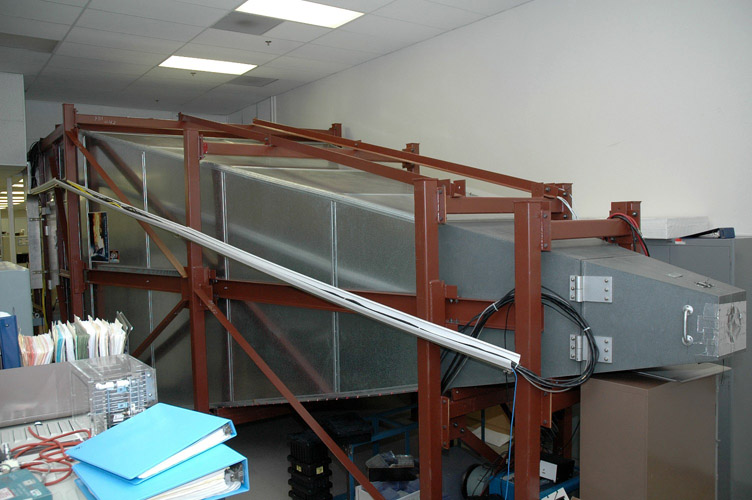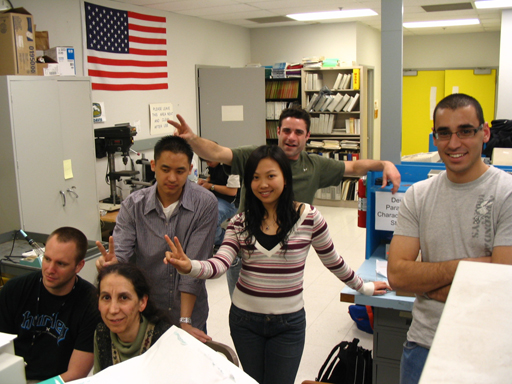Microwave Devices, Antennas and Systems Laboratory (MDASL)
University of California, Davis, Kemper Hall 3176
Principal Investigator: Prof. G. R. Branner



Introduction
Welcome to the Microwave Devices, Antennas and Systems Laboratory website. We are pleased to provide this website so that our visitors are afforded a more in-depth understanding of our laboratory, its research, and our teaching in the field of RF and Microwave engineering.
In addition to its extremely important function of providing a hands-on laboratory experience for students taking RF and Microwave courses such as EEC 132A, 132B, 132C, 228 and 289, this laboratory serves as an important research facility.
The Microwave Devices, Antennas and Systems Laboratory (MDASL) performs research in a broad spectrum of RF and Microwave active and passive devices. A partial list of the substantial MDASL research contributions is provided in the reference section (R.1) of this website. Please note that reference section 1 features active and passive microwave devices while reference section 2 focuses on antennas. Active and passive device topics currently under investigation at MDASL include GaN and SiC device modeling and the role of GaN and SiC in emerging RF systems. This is being pursued by researching GaN and SiC front end devices such as high efficiency GaN Power Amplifiers, high power high efficiency SiC and GaN frequency multipliers and low noise GaN amplifiers.
The second section of the references contains representative examples of the Antenna research projects which have been performed recently.
Currently, antenna research efforts are primarily focused on conformal arrays in the 18 and 3 GHz frequency range. Another antenna related effort concerns a dipole array direction finding system.
Antenna arrays offer numerous design advantages such as higher gain and directivity in comparison to single element antennas. There is a need for installing antenna arrays on non-planar surfaces such as those found in airplanes, missiles, vehicles, submarines, trains, satellites, etc…. The shape and geometry of conformal antenna arrays needs to be defined to form a conformal array to fit naturally on a prescribed curved surface of a practical shape. The need for conformal antennas is even more pronounced for the large-sized apertures that are necessary for functions like satellite communication and military airborne surveillance radars. Recently, numerical methods utilizing eigenfunctions such as FEM, FDTD, or MoM are difficult to characterize for electrically large structures with arbitrary surfaces. Therefore, our group has been developing a fast and generalized methodology to characterize and synthesize conformal array antennas with open-waveguides (OWG) and microstrip patches. This technique captures the main radiation and electromagnetism effects such as reflection/scattering, shadowing, and fringe current. We will present the measured and modeled radiation patterns of our reliable single OWG radiator model and representative example conformal antenna array structures. The model is also used for broad-banding purposes where both methodology and measured results are to be presented.
The Antenna research effort, which has been extensive, has just been considerably augmented by the recent donation of a large new 32 ft. commercially manufactured anechoic chamber to the MDASL laboratory. This instrument is depicted in the accompanying figure.

Among other advantages, this chamber (roughly estimated at $500K) will permit development of lower frequency antenna systems such as the dipole array DF system described below (please see the research section for more on this project).
Short Background and History
The Microwave Devices and Systems Laboratory has been under the leadership of Professor G. Rick Branner for over 30 years. The laboratory has been developed from an equipment base of several vintage slotted lines and an X band sweep generator into what today is arguably one of the finest academic facilities for education and research in RF and microwaves. The research laboratory is staffed by four PhD researchers with well over 90 years of combined experience in Microwave and RF engineering and Antenna analysis and design. In addition to 20 advanced level students utilizing the laboratory, at present there are a half dozen graduate students performing research.
The internationally renowned curriculum has produced many hundreds (~500) of RF and Microwave Engineers over the course of its existence. Our graduates are employed in many of California’s companies, which produce RF and Microwave products.
MDASL contributions to RF and Microwave education and research continue to be recognized and acknowledged by corporations such as Hewlett Packard, Agilent, Loral, Northrop Grumman and others. This has been exemplified by the over $3 million in donations and contributions our laboratory has received.

